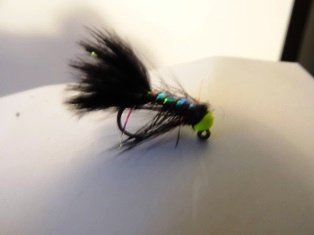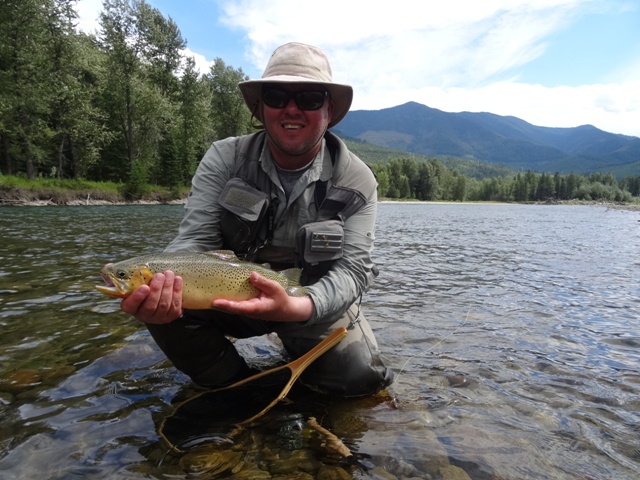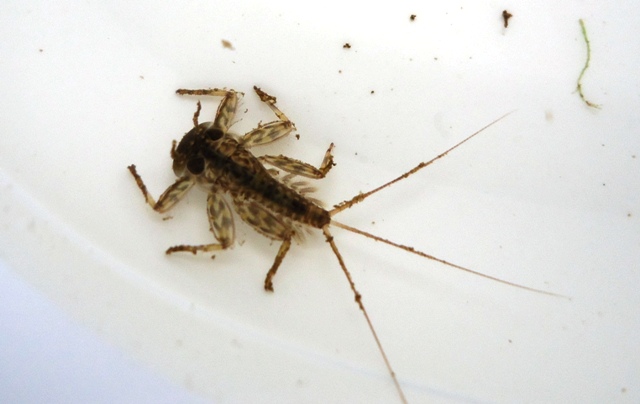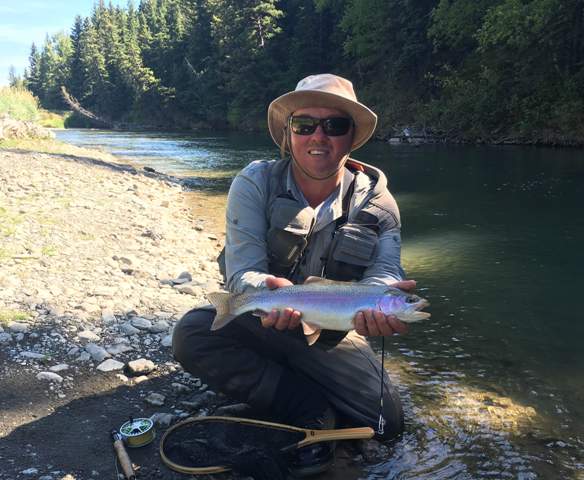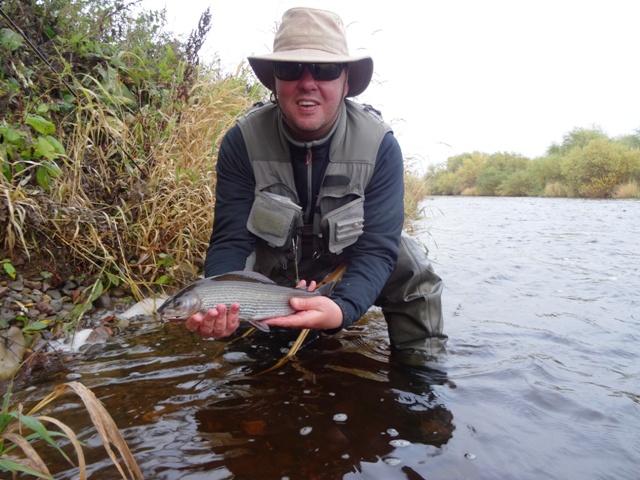| Back to Back Issues Page |
 |
|
'Til next time October 08, 2016 |
'Til next timePerhaps now, after a few days sulking, it is the best time to reflect on the passing trout season, RIP. On most days trout could be caught on the upper Tees a on a variety of methods including dry flies (usually the ever reliable soft hackle dry), nymphs (black magic/pheasant tail/perdigone), or spiders. We have even got deep down and dirty and used a black marabou tadpole tied with a flashback and a 5 mm fluorescent red/orange/green bead. Yes imitative wild fishing at its best or perhaps it’s very antithesis? We will examine methods and flies that have produced success over 2016.
A Fred Bainbridge "taddy" or rather my version of itThis tadpole or “Taddy” to use its Yorkshire colloquialism is like a Woolly Bugger, but smaller(about one inch long), with oodles more movement and a great big hotspot tungsten bead. It appeals to the pure predatory instinct of a trout because nothing actually in the river looks like this. But it looks alive to a trout! The modern jig hook accentuates movement and the fly is worked fast and twitched aggressively hence the weight from the bead. If the fly is left dead drift it will find bottom and snag quickly. It catches a lot of wild fish. It is a style and method perhaps unique in river fly fishing although closely related to streamer fishing. The main difference being the Taddy is generally fished anywhere or anytime and in any direction and is about an inch long. It is not just down and across but an active form of fly fishing. The name of the game is converting active follows to actual takes of the fly. When this method is effective it can easily result in 30 plus fish days even on hard waters. When it is hard (usually shallow and clear) it does still work but you will see far more refusals. This is a relatively modern river pattern but can produce great results in the right hands. It is perhaps the only effective method in rising colouring water.
Our dry fly DVD features the tying of this fly and 5 other deadly dries including the Lifejacket Elk Hair Caddis.
A natural nymph!One of my most successful nymphs this year was sent to me from Spain by a friend of mine Neil. This was a perdigone or Spanish nymph. It proved to be a great fly fished as a nymph under a dry fly (the duo). I usually fished it upstream by 3-4 rod lengths or even more in clear conditions. Because of the fast sinking nature of the fly it proved fantastic for this method and I caught a lot of fish. The fly has no hackle and is finished with a silver bead and UV cure over the body material. The ever reliable black magic and hotspot pheasant tail have also worked well. The 3mm black magic was a particular favourite of Elk River cutthroat on those rare occasions where they were not rising. And the ever reliable polyphaetis (gold Polyphaetis size 10) took my most stunning fish of the year this remarkable wild rainbow trout from above Frank Slide on the Crowsnest River, Alberta. This was a small stream on its bones in bright sunlight.
What colours on a wild rainbow trout?It has been a memorable year meeting many of my of you and I will look forward to seeing some of you again next trout season. Meanwhile the changing colours in the trees mean we are entering one of the most dramatic periods of the year for river Fly fishers. Conditions are changing quickly but there can be opportunities for a last minute bounty of dry fly caught grayling. October is a good month for this and after this dry fly caught fish will be a memory over the Winter months. So if you are a dry fly aficionado like me you are watching the weather for quiet days. And grayling will keep many of us entertained over the Winter months until the new trout season full of promise will start. But now is the time to seize those precious days when the sun might shine and the wind doesn’t blow.
Regards, Jonathan and Nellie. |
| Back to Back Issues Page |
